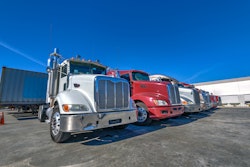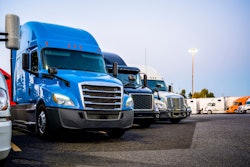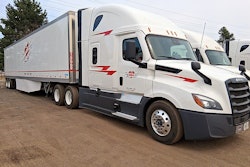Over the last few years, GPS technology has become an essential tool to track mobile field operations. A recent Aberdeen Group study cited customer demand for better service as the top market driver for adopting GPS technology, followed by the need to improve inefficient task scheduling and routing.
One recent software development to address this need is GPS phone-based solutions that integrate GPS data with a rich set of business event data to mobilize business processes. GPS information and event information have become inseperable. In other words, rather than just provide a standard “fleet at a glance” location-based service, software developers are forging solutions that mobilize business processes tied to the specific actions of individual drivers and/or workers.
West Valley, Utah-based Intermountain Express distributes automotive parts from dealerships to wholesale buyers. Last October, the company started using Tracker from AirClic’s MP platform in its 45-truck fleet. The company began creating barcode labels for each shipment. Using the AirClic Tracker program, drivers now use a scanner attachment for their Nextel phones to scan every package at each stage of the process: pickup, warehouse, route consolidation, and at the final delivery. The system “stamps” each event with the time and GPS location.
Having this event-driven record of shipments has helped catch errors by dealerships invoicing and sending parts to the wrong location, says John Droubay, owner of Intermountain Express. Without an electronic record, the company used to treat such events as an internal customer service failure.
“When customers call, this has saved us immesurable money and time. Before we had the AirClic system, we had no idea. We were buying these parts. The first week we put AirClic into play, we were catching this stuff right and left.”
Routing is another key business process that Intermountain Express has improved. The company distributes parts throughout the night to its customers, primarily body shops, repair shops and other dealerships. Trucks load up at 10:00 PM and deliver before 7 AM. Sometimes drivers would pull over and fall asleep and deliver late, Droubay says. With about 25 trucks running at night, somebody had to check up on drivers by radio every hour.
“The advantage is that now, we can logon and see everybody. If (a driver) sat for more than 10 minutes, we get an alert,” he says. “We cut down on labor substantially.”
This week, AirClic released Tracker 2.0, which features a map with drill-down capabilities for each driver’s status, route, and activities for the day, says Tim Bradley, CEO of AirClic.
The new AirClic MP Tracker 2.0 also tracks all field-based events and the context surrounding them. Managers of mobile workforces can view real-time data in map and tables views simultaneously, and search the information by worker, item, event, date, time zone, and history.
As another example of the integration of GPS and event-driven business processes, AirClic customer Waste Management has drivers take a picture of each site, accompanied with a GPS and time stamp, before and after delivery as verification that the container was dumped, Bradley says.
Other features in AirClic MP Tracker 2.0 include:
· Interactive Tracking: Takes GPS beyond a simple view of only mobile staff location with the ability to track anything that is mobile – packages, assets or activities – through an interactive and customizable map.
· Geo-fencing: Automatically tracks when a worker crosses out of a designated work area, and can help locate the closest available worker to a specific landmark for the handling of a last-minute work order.
· Text Messaging and Alerts: Employees can send text messages to the field or to a specific worker about a job status, for example. Field workers can use this capability to ask a question about their next task.
· Customizable Architecture: Users can open specific job and worker information right on the map, feed specific data into worker profiles and job status, and customize the system to add more value to the data behind information housed by worker, landmark, location, asset, inventory, event history, travel speed, productivity, proximity and availability.










